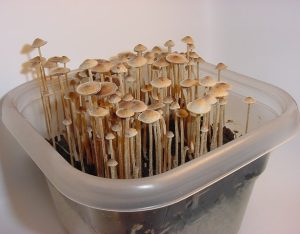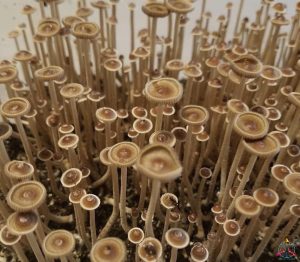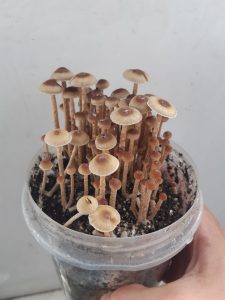Uncategorized
The Birth and Societal Impact of Philosopher’s Stone Magic Mushroom in the USA
Introduction – Buy Philosopher stone magic mushrooms
The world of psychedelics has long been intertwined with human history, from ancient shamanic rituals to modern scientific research into their therapeutic potential. Among these, the Philosopher’s Stone magic mushroom (Psilocybe tampanensis) has emerged as a particularly intriguing and influential species. Known for its ability to induce profound introspective and mystical experiences, this strain of magic mushroom has carved out a unique place in American culture, medicine, and spirituality. This article explores the origins of the Buy Philosopher’s Stone magic mushroom, its arrival in the United States, and its profound societal impact.

Discovery and Introduction to the United States
The Philosopher’s Stone magic mushroom was first discovered in 1977 by mycologist Steven Pollock in Tampa, Florida. Unlike the more commonly known Psilocybe cubensis, Psilocybe tampanensis is unique in its ability to produce sclerotia, also known as “truffles” or “philosopher’s stones.” These sclerotia serve as a survival mechanism for the fungus, allowing it to endure harsh environmental conditions. Due to their dense concentration of psilocybin and psilocin, the psychoactive compounds responsible for psychedelic effects, these truffles gained popularity among psychonauts and researchers alike.
The discovery of this strain coincided with a broader psychedelic movement in the United States, as the 1960s and 1970s saw a surge of interest in altered states of consciousness, fueled by figures such as Timothy Leary and Terence McKenna. While initial encounters with the mushroom remained within the confines of underground communities, it gradually gained traction, thanks to the increasing body of scientific literature on psychedelic substances.
Legal Challenges and Underground Popularity
Despite its growing popularity, Buy Philosopher stone magic mushrooms, like other psilocybin-containing fungi, faced strict legal restrictions. The Controlled Substances Act of 1970 classified psilocybin and psilocin as Schedule I substances, effectively criminalizing their use, possession, and distribution. This legal classification created barriers to scientific research and limited the ability of individuals to explore their potential benefits legally.
However, the underground psychedelic community ensured that interest in the mushroom did not wane. Mycologists and enthusiasts propagated the spores through clandestine networks, making them accessible to those willing to explore altered states of consciousness. The rise of the internet in the 1990s further facilitated access to information about cultivation, effects, and experiences related to the Philosopher’s Stone mushroom, making it a sought-after entity in the counterculture movement.

Therapeutic and Psychological Implications
In recent years, the resurgence of psychedelic research has shed light on the potential therapeutic benefits of psilocybin mushrooms, including the Philosopher’s Stone variety. Studies conducted at institutions such as Johns Hopkins University and the Multidisciplinary Association for Psychedelic Studies (MAPS) have highlighted psilocybin’s effectiveness in treating depression, anxiety, PTSD, and substance use disorders.
Unlike traditional pharmaceuticals, psilocybin therapy often requires only a few guided sessions to produce long-lasting positive effects. The Philosopher’s Stone mushroom, in particular, has been praised for its ability to induce deep introspective experiences, which can help individuals confront past traumas, existential questions, and destructive behavioral patterns. Many individuals who have undergone psychedelic therapy report experiencing a profound sense of interconnectedness, personal growth, and emotional healing.

Cultural and Spiritual Influence
The cultural and spiritual impact of the Buy Philosopher stone magic mushrooms in the U.S. has been profound. From the New Age movement to modern-day psychonauts, this mushroom has been associated with mystical experiences, ego dissolution, and profound insights into the nature of existence.
The name “Philosopher’s Stone” itself carries significant symbolism, referencing the legendary alchemical substance believed to grant enlightenment and eternal life. In many ways, the experiences reported by those who consume these mushrooms align with the mystical and transformative aspirations of alchemists and spiritual seekers throughout history. In indigenous traditions, psychedelics have long been used to connect with the divine, and contemporary users often describe their journeys as spiritual awakenings that transcend religious dogma.
The integration of psychedelics into mainstream spirituality has led to the formation of various groups and retreats that use psilocybin for guided meditative and self-exploratory sessions. Organizations such as the Santo Daime Church and the Sacred Mushroom Church of the United States have incorporated psilocybin into their religious practices, arguing for its legal protection under the Religious Freedom Restoration Act.

Economic and Legislative Shifts
With the increasing acceptance of psychedelics for therapeutic use, there have been significant shifts in legislation regarding psilocybin-containing mushrooms. In 2020, Oregon became the first state to legalize the regulated use of psilocybin for therapeutic purposes, paving the way for a broader psychedelic renaissance. Cities such as Denver, Colorado, and Oakland, California, have also decriminalized psilocybin, reducing the legal risks associated with personal use and possession.
These changes have led to the emergence of a growing psychedelic economy, with businesses and startups focusing on psilocybin research, therapeutic services, and even retreats aimed at providing safe and guided experiences. As regulations continue to evolve, the Buy Philosopher stone magic mushrooms is likely to play a crucial role in this expanding industry, offering a unique and potent form of psilocybin that distinguishes it from other varieties.

Conclusion
The Buy Philosopher stone magic mushrooms has made a remarkable journey from its discovery in Florida to its influence on American culture, spirituality, and mental health treatment. Despite legal challenges, it has persisted as an underground symbol of self-exploration and healing, and recent scientific advancements have helped legitimize its potential benefits. As attitudes toward psychedelics shift and new policies emerge, the Philosopher’s Stone magic mushroom stands at the forefront of a broader movement that seeks to redefine the way society understands consciousness, mental health, and spirituality. Its impact, both past and future, continues to shape the evolving landscape of psychedelics in the United States.
